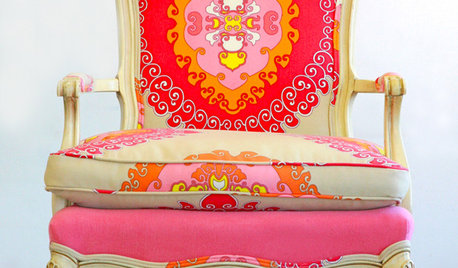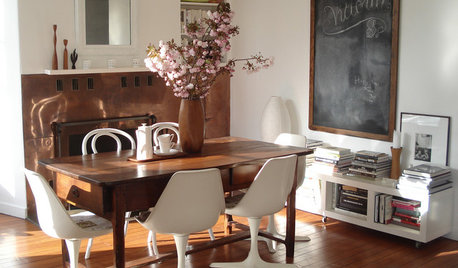Inherited a Clivia - Need Advice
Kasima
10 years ago
Related Stories

LIFEHow to Handle Inherited Things You Don’t Really Want
Whether you’ve inherited a large collection of items or a single bulky piece of furniture, it’s OK to let it go if you don’t need or want it
Full Story
FEEL-GOOD HOMEInherited Pieces: Embrace the Approach That Works for You
How you remember and honor loved ones through heirlooms is your decision alone
Full Story
DECORATING GUIDES10 Design Tips Learned From the Worst Advice Ever
If these Houzzers’ tales don’t bolster the courage of your design convictions, nothing will
Full Story
KITCHEN DESIGNSmart Investments in Kitchen Cabinetry — a Realtor's Advice
Get expert info on what cabinet features are worth the money, for both you and potential buyers of your home
Full Story
FURNITUREOld Furniture: Clean, Reupholster or Replace It?
A veteran upholstery cleaner weighs in on the options for found, inherited and thrift store furniture
Full Story
HOUZZ TOURSMy Houzz: Color and Heirlooms Combine in a Welcoming Bungalow
Inherited furniture mixes with bright hues in a 1921 Dallas home that embraces the neighborhood and modern life
Full Story
LIFEThe Wisdom of Kenny Rogers, for Declutterers
No need to gamble on paring-down strategies when the country music legend has already dealt out some winning advice
Full Story
WINTER GARDENINGPruning Secrets for Exquisite Roses
Encourage gorgeous blooms year after year with this time-tested advice on how to prune your rosebush in winter for health and shape
Full Story
SELLING YOUR HOUSEThe Latest Info on Renovating Your Home to Sell
Pro advice about where to put your remodeling dollars for success in selling your home
Full Story
LIFE‘A Little Bold Color Goes a Long Way’ and Other Houzz Quotables
Home projects, advice and even a tour of a castle captured our attention this week
Full StorySponsored
Columbus Area's Luxury Design Build Firm | 17x Best of Houzz Winner!
More Discussions






cocoabeachlorax
Ohiofem 6a/5b Southwest Ohio
Related Professionals
Lowell Landscape Architects & Landscape Designers · Montgomeryville Landscape Architects & Landscape Designers · Rancho Palos Verdes Landscape Architects & Landscape Designers · Bainbridge Island Landscape Contractors · Burien Landscape Contractors · Duarte Landscape Contractors · Fairfield Landscape Contractors · Paso Robles Landscape Contractors · Soddy Daisy Landscape Contractors · Spring Landscape Contractors · Washington Landscape Contractors · Antioch Landscape Contractors · Greensboro Driveway Installation & Maintenance · Riverside Driveway Installation & Maintenance · Sunnyvale Driveway Installation & MaintenanceKasimaOriginal Author
Ohiofem 6a/5b Southwest Ohio